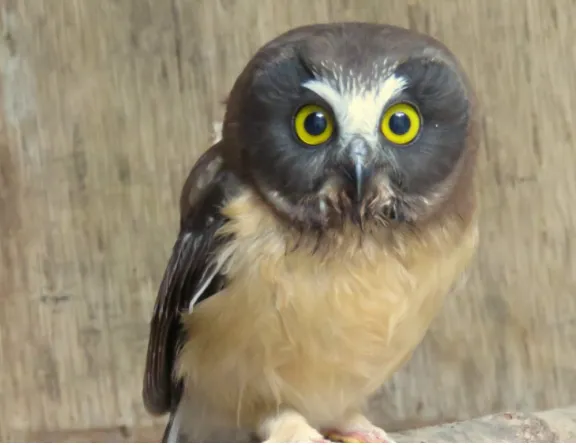We’ll go over the most common owls in Kansas, with images and important information. The data was acquired from trustworthy sources and confirmed by an Ornithologist.
Did you know that there are 23 different types of owls that live in Kansas? In this blog post, we will take a look at each of these owl species and learn some interesting facts about them. Owls are one of the most fascinating creatures in the animal kingdom, and it’s definitely worth taking the time to learn more about them!
Most Common Owls in Kansas
Great Horned Owl
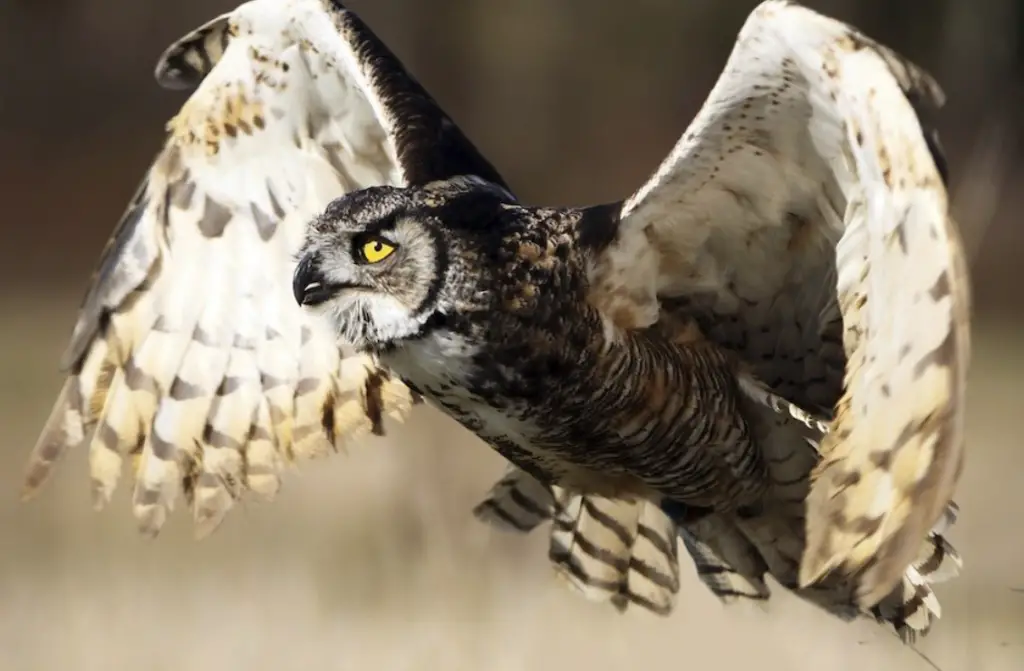
The Great Horned Owl is one of the most common owls in North America, and it can be found in a variety of habitats. In Kansas, these owls are often found in woodlands and prairies. They are also known to inhabit agricultural areas and urban parks.
Great Horned Owls are large owls, and they have a wingspan of up to 47 inches. They are typically brown or gray in color, with characteristic “horns” on their head.
These owls are nocturnal, and they feed primarily on small mammals such as rodents, rabbits, and skunks. Great Horned Owls also eat birds, reptiles, and amphibians.
Great Horned Owls are very territorial, and they will often defend their territory against other owls and predators. They are also known to be aggressive towards humans.
However, Great Horned Owls are generally considered to be beneficial animals because they help to control the populations of rodents and other small mammals.
If you are lucky enough to see a Great Horned Owl in the wild, be sure to take some time to enjoy this amazing creature. But remember, always give them plenty of space and never attempt to touch or handle them.

Barn Owls
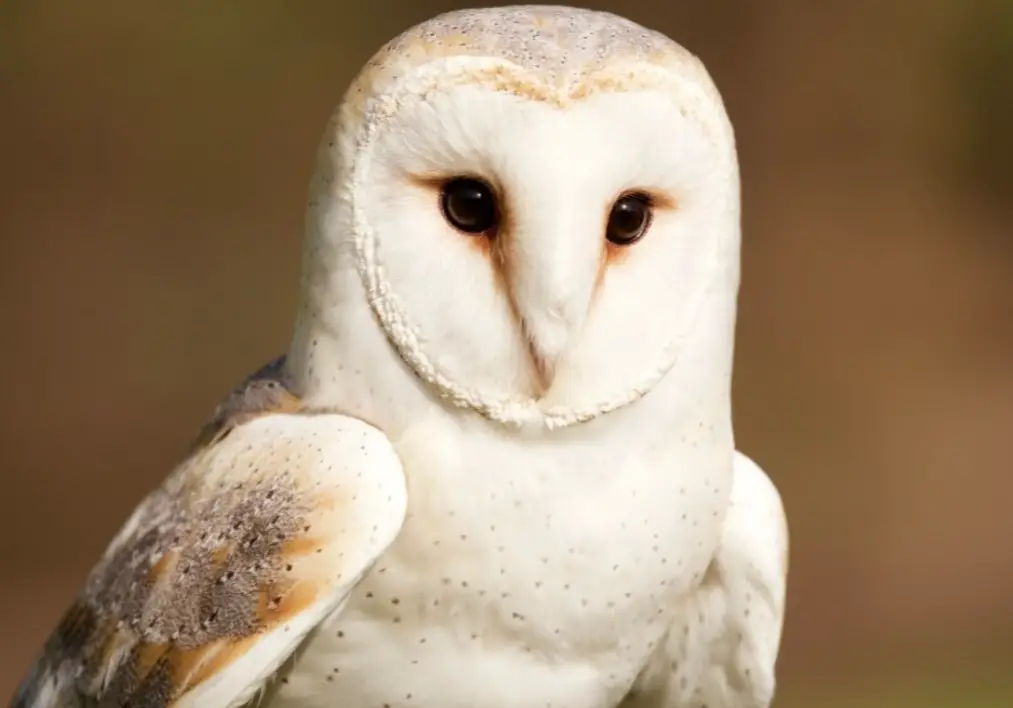
The barn owl is a medium-sized owl with a large, round head and no ear tufts. It has a white face with black eyes and a hooked beak.
The upper parts are brown with white spots, while the underparts are pale with dark streaks.
This owl gets its name from its habit of roosting in old barns and other buildings. It can also be found in woods, meadows, and farmland. The barn owl is a nocturnal bird, so it is most often seen at night.
This owl hunts by flying low over the ground and using its keen hearing to locate prey. Its diet consists mostly of small mammals such as mice, rats, and rabbits. It will also eat birds, insects, and amphibians.
The barn owl can be found in all of the continental United States, except for Nevada and Hawaii. In Kansas, it is most common in the eastern part of the state.

Burrowing Owl
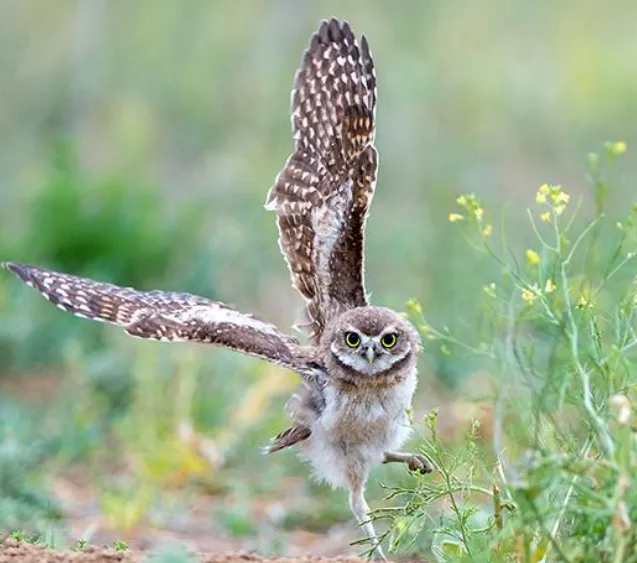
Burrowing owls are small, stocky owls with long legs. They get their name from their habit of living in burrows underground.
These burrows can be ones that they have dug themselves or ones that were abandoned by other animals such as prairie dogs. Burrowing owls are found in open grasslands and prairies, as well as agricultural areas.
They are usually quite tame and can often be seen perched on fence posts or power lines.
Burrowing owls are active during the day and hunt a variety of prey, including insects, small rodents, and reptiles.
They typically nest in tunnels or chambers at the end of their burrows. The female owl will lay between four and eight eggs, which hatch after about a month.
The young owls are cared for by both parents and leave the nest after about two months.
Burrowing owls typically live for about five years in the wild but can live up to fifteen years in captivity. These charming little owls are an important part of the ecosystem in Kansas.

Northern Saw-Whet Owl
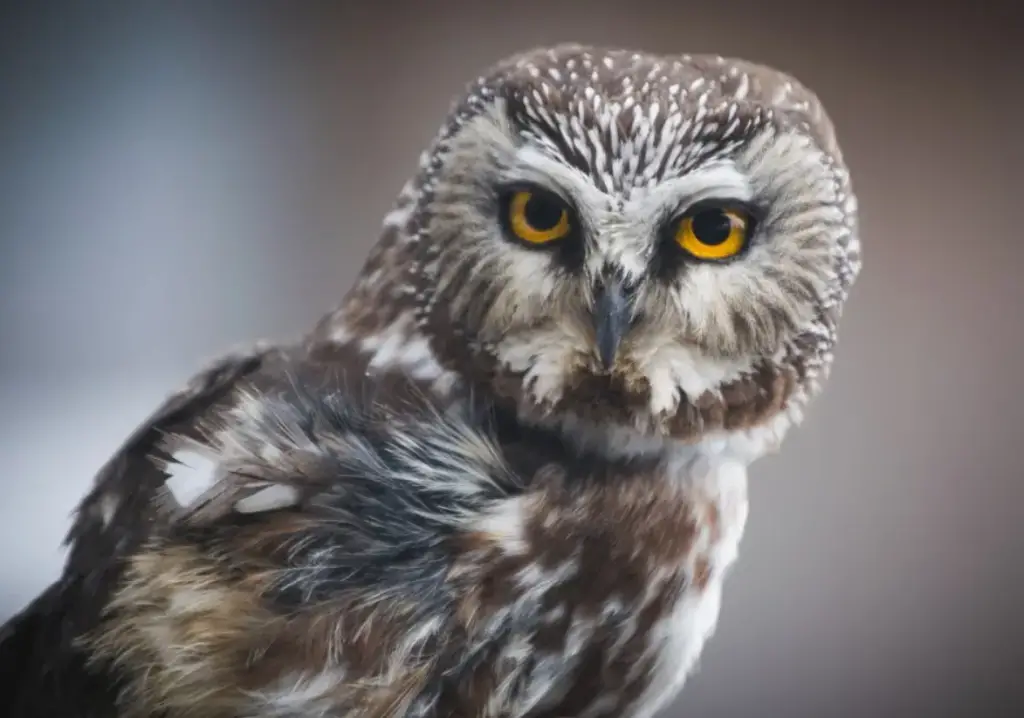
The Northern Saw-Whet Owl is a medium-sized owl that is found in open prairies and grasslands of the Great Plains.
It has mottled brown upperparts, white underparts, and a rust-colored facial disk. The Northern Saw-Whet Owl is named for its wheat-colored markings on the face and underparts.
This owl hunts primarily at night, preying on small mammals and birds. In Kansas, the Northern Saw-Whet Owl is most often found in the western and central parts of the state.
The Northern Saw-Whet Owl nests in trees or on the ground, laying a clutch of three to seven eggs.
The female incubates the eggs for about 26 days, and the young owlets fledge (leave the nest) at about eight weeks old.
The Northern Saw-Whet Owl is a common owl in Kansas and can be found throughout most of the state. This owl is easily identified by its distinctive wheat-colored markings on the face and underparts.
The Northern Saw-Whet Owl is a nocturnal predator, hunting small mammals and birds at night. If you’re lucky enough to spot one of these owls in Kansas, be sure to take a moment to appreciate this amazing bird!

Related article: Types of Owls in Wyoming
Short-eared Owls
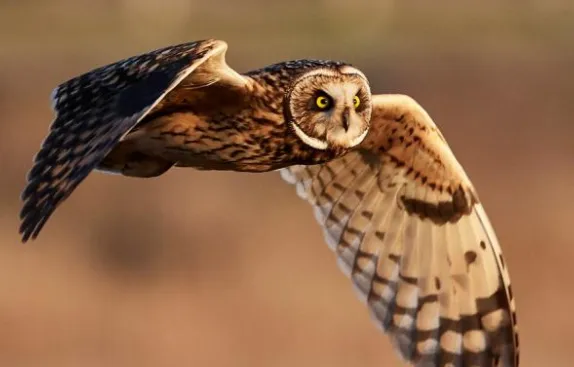
Short-eared owls are one of the most widespread owl species in North America. They can be found in a variety of habitats, including open fields, grasslands, and marshes.
These owls are relatively small, with a wingspan of only about two feet. Short-eared owls get their name from their short, rounded ears, which are tufted with feathers.
These owls are mostly brown and white, with some dark streaks on their wings and back. Short-eared owls hunt during the day, and they use their excellent hearing to locate prey.
These owls eat a variety of small mammals, including voles, mice, and rats.
Short-eared owls are common in Kansas and can be found in a variety of habitats across the state.
These owls are well adapted to living in open areas, and they can be easily seen perched on fence posts or power lines.
Short-eared owls are most active during the day, and they can often be seen hunting for prey in open fields and grasslands. These owls are opportunistic hunters and will eat a variety of small mammals, including voles, mice, and rats.
Short-eared owls are an important part of the Kansas ecosystem, and they play an important role in controlling the populations of small mammals.
These owls are a common sight in the state, and I encourage everyone to take the time to watch for them while they are out and about.

Long-eared Owls
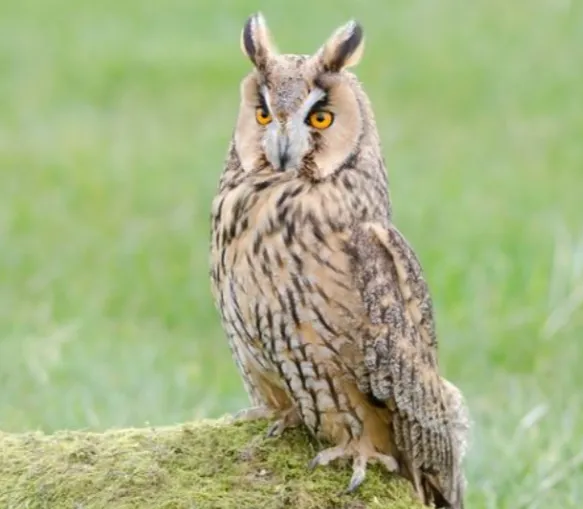
Long-eared Owls are medium-sized owls that have long ears and long tails. They are brownish in color, with white spots on their wings and tips of their feathers.
Long-eared Owls are nocturnal birds, meaning they are active at night. They hunt small rodents such as mice, rats, and voles.
Long-eared Owls are found in open woodlands, forests, and fields. In Kansas, they are most often found in the eastern part of the state. Long-eared Owls typically nest in trees, using abandoned nests of other birds such as hawks or crows.
If you’re lucky enough to see a Long-eared Owl, you’ll likely hear it before you see it. These owls hoot softly, with a series of four to eight notes.
The first note is lower in pitch than the others, which gives the hooting sound a “sawing” quality.
Males and females have different hooting calls, so it’s easy to tell them apart. Long-eared Owls also make a “kuk-kuk-kuk” sound when they are alarmed or excited.

Barred Owl
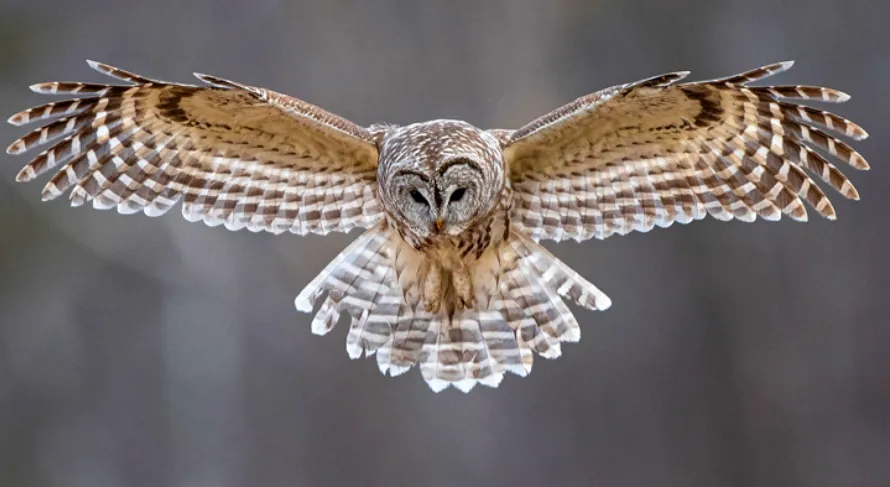
Barred Owls are the most common owl in Kansas. They have a wingspan of about 47 inches and weigh between one and two pounds. Barred Owls are mostly nocturnal, but can sometimes be seen during the day.
They live in wooded areas near water. Barred Owls eat small mammals, such as mice, rats, and rabbits, as well as birds. They have a distinctive barred pattern on their feathers that gives them their name.
Barred Owls are very territorial and will often attack other owls or animals that come into their territory. They make a hooting noise to communicate with each other.
Barred Owls are considered to be fairly aggressive and are not afraid to attack humans if they feel threatened. If you see a Barred Owl, it is best to leave it alone and give it space.
Barred Owls are the most common owl in Kansas. They have a wingspan of about 47 inches and weigh between one and two pounds. Barred Owls are mostly nocturnal, but can sometimes be seen during the day.
They live in wooded areas near water. Barred Owls eat small mammals, such as mice, rats, and rabbits, as well as birds. They have a distinctive barred pattern on their feathers that gives them their name.
Barred Owls are very territorial and will often attack other owls or animals that come into their territory. They make a hooting noise to communicate with each other.
Barred Owls are considered to be fairly aggressive and are not afraid to attack humans if they feel threatened. If you see a Barred Owl, it is best to leave it alone and give it space.

Eastern Screech-Owl
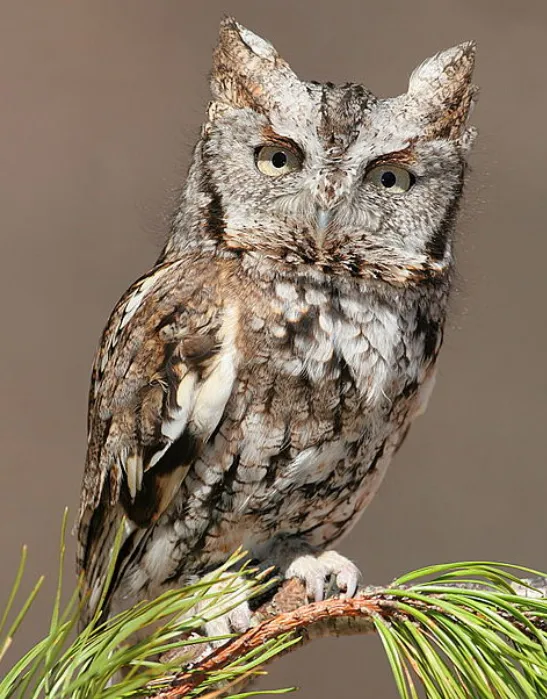
Eastern screech-owls are one of the most common owl species in Kansas. They are small, with a wingspan of about 22 inches, and have characteristic heart-shaped faces.
They are typically gray or brown in color, but can also be reddish or buffy.
Eastern screech-owls are nocturnal, meaning they are most active at night. They hunt small mammals, reptiles, and insects. Their diet consists mostly of mice and voles.
Eastern screech-owls nest in cavities in trees. They will also use man-made nest boxes.
Females lay between two and six eggs per clutch, and incubate them for about 28 days. The young owls fledge, or leave the nest, at about 30 days old.
Eastern screech-owls are a common sight in Kansas and can be found in many different habitats including woods, farmlands, and even cities.
If you’re lucky enough to spot one, you’ll surely be charmed by their cute, heart-shaped faces.
Eastern screech-owls are a common sight in Kansas and can be found in many different habitats including woods, farmlands, and even cities. If you’re lucky enough to spot one, you’ll surely be charmed by their cute, heart-shaped faces.

Snowy Owl
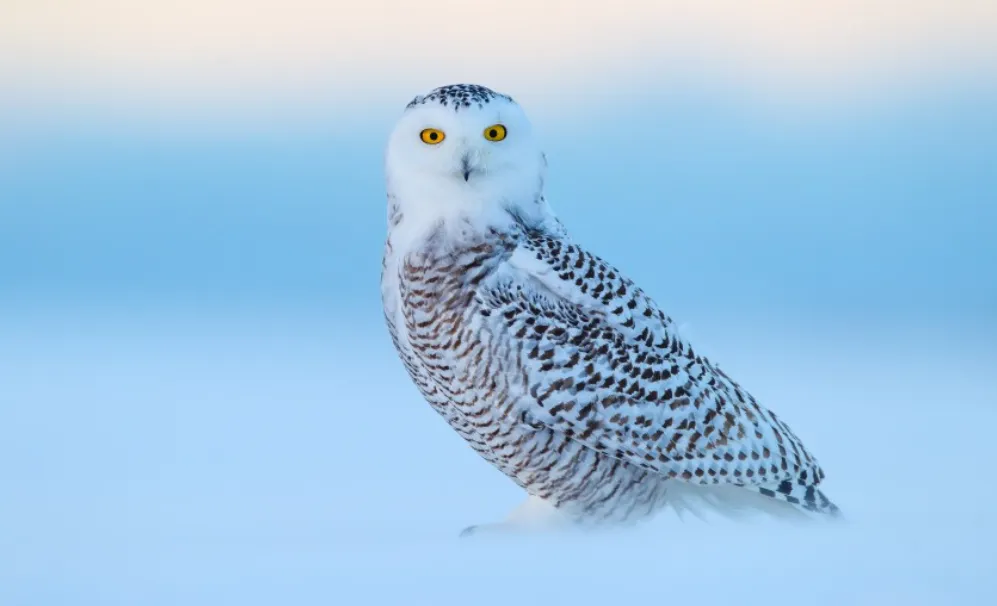
The snowy owl is a large, white owl of the typical owl family. Snowy owls are native to Arctic regions in North America and Eurasia.
They are one of the most specialized predators in the avian world and have very few natural predators themselves.
In Kansas, these magnificent birds can be found near open areas such as airports, agricultural land, and large bodies of water.
Snowy owls are the heaviest owl in North America, sometimes weighing more than four pounds. They have a rounded head with no ear tufts, yellow eyes, and a black beak.
The upper parts are snowy white while the underparts are mostly buff or light brown. Snowy owls have powerful talons and beaks that are well adapted for hunting their primary prey, lemmings.
They also eat other small rodents, rabbits, birds, and fish.
In Kansas, snowy owls typically hunt during the day when they can spot their prey more easily. They perch on elevated areas such as fence posts, telephone poles, or the tops of buildings to watch for potential prey.
When they spot their target, they swoop down and snatch it up in their talons. They can also fly low over the ground to catch prey running from cover.

Are owls good to have around?
There are a few things to consider when answering this question. Owls are nocturnal predators, so they can help keep rodent populations in check. They also have sharp eyesight and hearing, which can be beneficial in spotting potential threats.
However, owls can also pose a threat to small pets and livestock. If you’re considering keeping an owl as a pet, do your research to make sure it is the right fit for your home and lifestyle.
Owls are also known for their wise demeanor, so they can be a great addition to any garden or outdoor space. They can help keep pests at bay while adding some natural beauty to the area. If you’re looking to add an owl to your backyard, be sure to check with your local wildlife authorities first to make sure it is legal to do so.

An avid ornithologist, zoologist and biologist with an unwavering passion for birds and wild animals.
Dr. Wilson’s journey in ornithology began in childhood and led him to obtain a Ph.D. in Ornithology from the prestigious Avian Research Institute. He has worked closely with renowned experts in the field and conducted extensive research and field studies globally.

